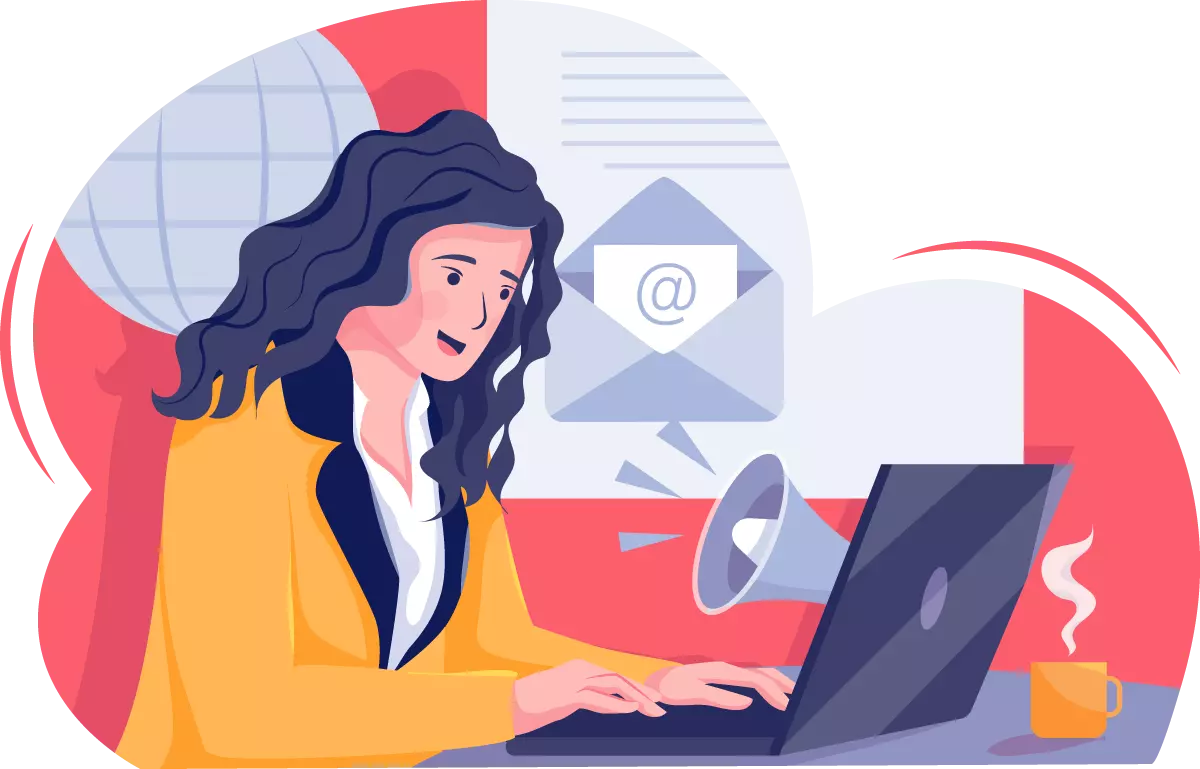Writing an email marketing copy has become an art form in itself. Experts and marketers have come to many conclusions regarding formulas that work best in emails. Still, every brand’s job is to give those formulas their original twist and make the email compelling to open, read, and interact with.
This guide brings you the main tips for writing a winning email marketing copy that will convert your leads into customers. Try incorporating all of these in the order that makes the most sense for your brand and your industry.
Hit the Perfect Length
No one will even read your email if they, upon receiving it, think that it’s too long or irrelevant. You must always cut to the chase and emphasize only the most essential information.
When you keep your email copy short and crispy, the reader can quickly determine what you offer, even if they only glance at your text. The perfect length for your email copy depends on several factors. Firstly, some audience groups have a higher tolerance for longer content than others (more on that in the Targeting section). Secondly, it depends on the nature of your product or service: whether the core values can be presented in a couple of sentences or if they need more space.
There is nothing inherently wrong with sending out longer emails if their length aid in persuasion. However, in principle, you should always stick to the “more or less” rule. It’s always better to offer the option of finding out more details about your products or services on your website.
Personalize and Customize
You should aim to write emails that are as personalized as possible. You can personalize emails by placing the recipient’s name in an accentuated spot within the text. For example, you can mention the recipient’s name right after the greeting (for example: “Hi Benedict!”).
Some tools can also place your recipient’s name in the Subject line. You can also set the name in strategic places in the body of your email copy (for example: “The reason we’re sending you this email, Benedict, is because…”).
To create a personalized and customized email copy, you can use a tool for creating and sending emails that allows you to use custom fields in your email copy. This will create a personal touch for your recipient and significantly increase the chances of your email being read.
Follow Expert Tips and Advice
If it’s your first time crafting an email copy, it might be wise to outsource to experts first. This way, you can quickly learn all the tricks of the trade applied to your example. Check out this list of the best writing services to find out which companies can help you write a perfect email copy.
Even if you don’t want to outsource the work to experts or you carry on writing your emails yourself, it’s always recommended you keep up with the latest trends in the industry. MailChimp frequently posts resources, courses, and case studies related to an email copy. You can also track the posts of some of the most successful marketers and affiliates.
Usually, it’s best to follow the tips and advice of those marketers that work for clients in the same industry as you. Some general rules are valid for all industries or niches, but it’s always best to get specific and observe practical examples.
Make the Copy Scannable
“Scannable” means that your reader can quickly go through the content of your email, i.e., scan it, without actually reading it word-by-word. Of course, careful reading is the ideal scenario, but as business writers, we must accept that this expectation is often unrealistic. In most cases, our emails will get a glance, not careful poring over.
The first thing your reader will do after receiving your email is to scan its content. That’s why the headings, subheadings, and even the post scriptum should clearly show the primary topic of your email. Here are some other things to watch out for:
- Use bolds, italics, and underlines (in appropriate contexts)
- Play around with colors to accentuate the most critical parts
- Split the text into short paragraphs
- Write concise and direct sentences
Target and Segment Your Email Audience
Every time you write an email copy, you must be perfectly aware of who you’re writing it for. Sending out a boomer-friendly email to a millennial, for example, is a lead wasted – in 99.99% of cases, it’s like you didn’t send it at all.
Your approach to readers should also differ depending on whether you’re addressing existing or future customers. When you’re writing for existing customers, you can use a more intimate and personal tone.
As a rule, these recipients have a trusting relationship with your brand. To them, you can present your current offer more directly and invite them to buy your products or services.
However, when it comes to potential future customers, it’s more important to give them a sense of security and earn their trust first. In the beginning phases of building a relationship, emails aim to reduce the feelings of risk or uncertainty about buying your products.
Subtle Sales
Gone are the days of aggressive, in-your-face sales methods that we saw in TV commercials throughout the ’90s and early 2000s. When writing an email copy in 2020, never “overdo” it. By pushing your product too much, you’re risking the buyer feels compelled to take a defensive stance from a pushy salesman and retreat to their safe zone. In this case, that’s the “Unsubscribe” zone.
Find a good balance between casual and informative communication with your audience and sales content. Generally speaking, you can apply the 80/20 rule: your email can be 80% educational and 20% sales content.
Include a CTA. They Can’t Refuse
A Call-To-Action is a must for any email, but don’t just place a button that’s not aligned with your goals. Carefully think about it and formulate a call-to-action you would click on yourself.
When you’re writing an email marketing copy, create a binding offer. Do not allow your reader to overthink the purchase because they will most likely drop out. To push results, you must assign a purchase deadline to your customer.
This makes perfect sense because email offers are not as long-lasting as a sales letter sent in traditional mail. Users rarely keep and go back to email offers in their inboxes. Therefore, you should make your recipient order right away. You will likely not convert that lead in that email if they don’t.
Conclusion
Like we’ve said, email marketing is art – when you apply all these tips, make sure you take them with a grain of salt and use them to the degree that makes sense for your audience. It all starts with knowing your customer (reader) well. Writing for that customer should be a breeze if you have this covered.


